Malabar
Basella alba
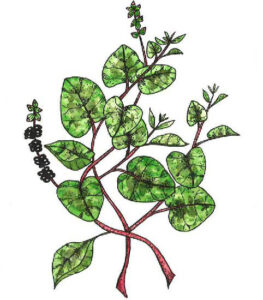
Ceylon spinach or Indian spinach (English), 锡兰菠 (xī lán bō cài, Mandarin), મલબાર પાલક (Malabāra pālaka, Gujarati)
Malabar Spinach is an edible vine native to India, and it is widely consumed throughout Asia and in tropical parts of Africa and the Americas. The leaves of both varieties, red and green, are prepared in a variety of cuisines ranging from curries and stir-fries to soups and sides. Malabar spinach is gaining popularity among home gardeners and chefs in Florida because it thrives in hot weather and serves as a nutritious alternative to cool-weather spinach.
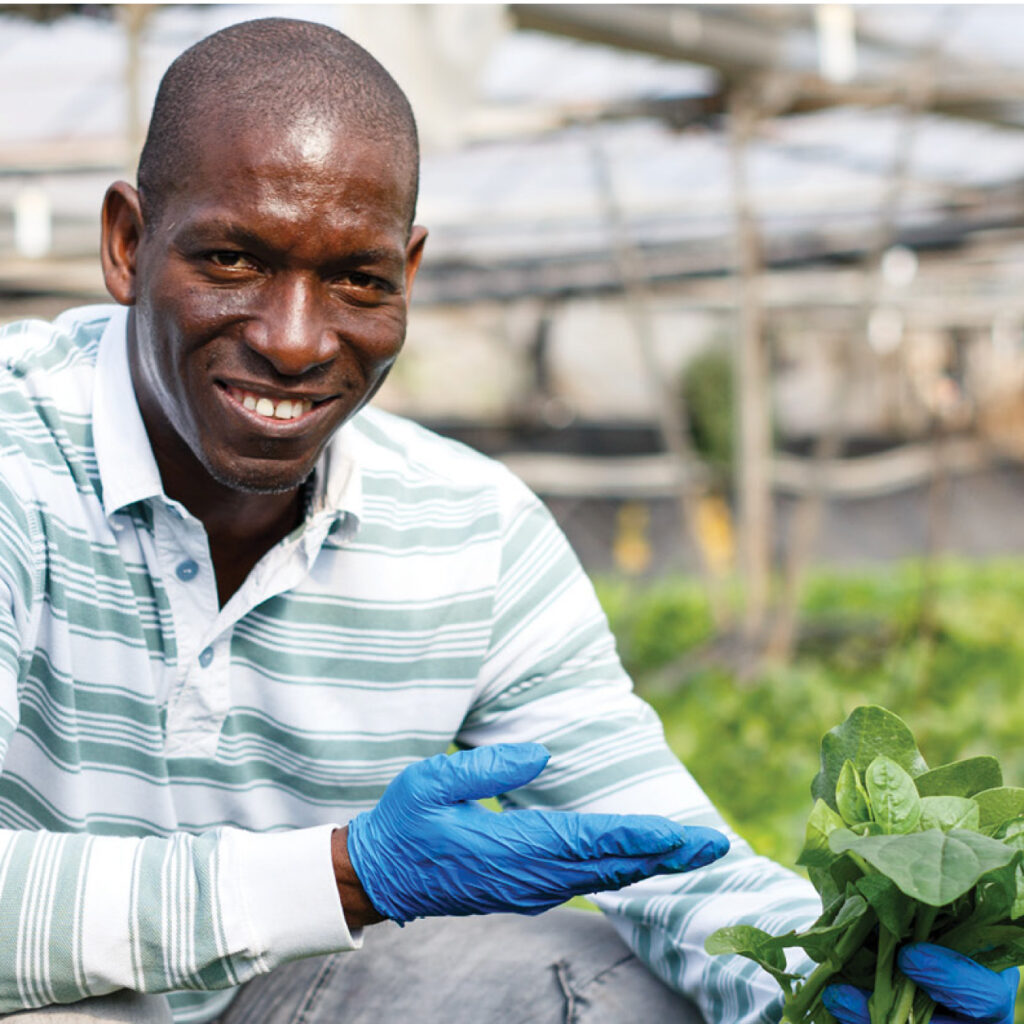
Malabar Spinach originated in India and spread to other parts of Asia and tropical Africa through early trade routes. The first mention of Malabar in an English text was 1691. It made its way to the Americas through European colonialism, and it was introduced to tropical areas such as Belize, Columbia and the West Indies. Since Malabar Spinach thrives in hot and hummus climates, it is receiving greater attention among contemporary farmers and gardeners in Florida as a summertime green.
Malabar Spinach is used fresh and cooked in much the same way as common spinach. It has a mucilaginous texture that can also serve as a thickening agent. In India, it is often found pureed in dal and served with rice; it is also added to soups, stews, curries, and seafood recipes. In the Philippines it is boiled with fish and vegetables to make utan. In Bengal, it is cooked with onion, chili, and mustard oil. The red variety also produces red berries that have been used medicinally, and their pigment has been used for make-up, textile dyes, and inks. In American cuisine, Malabar leaves are used in soups, frittatas and other egg dishes, as fillings, for stir-fries, as an alternative to flour or corn-based tortillas.
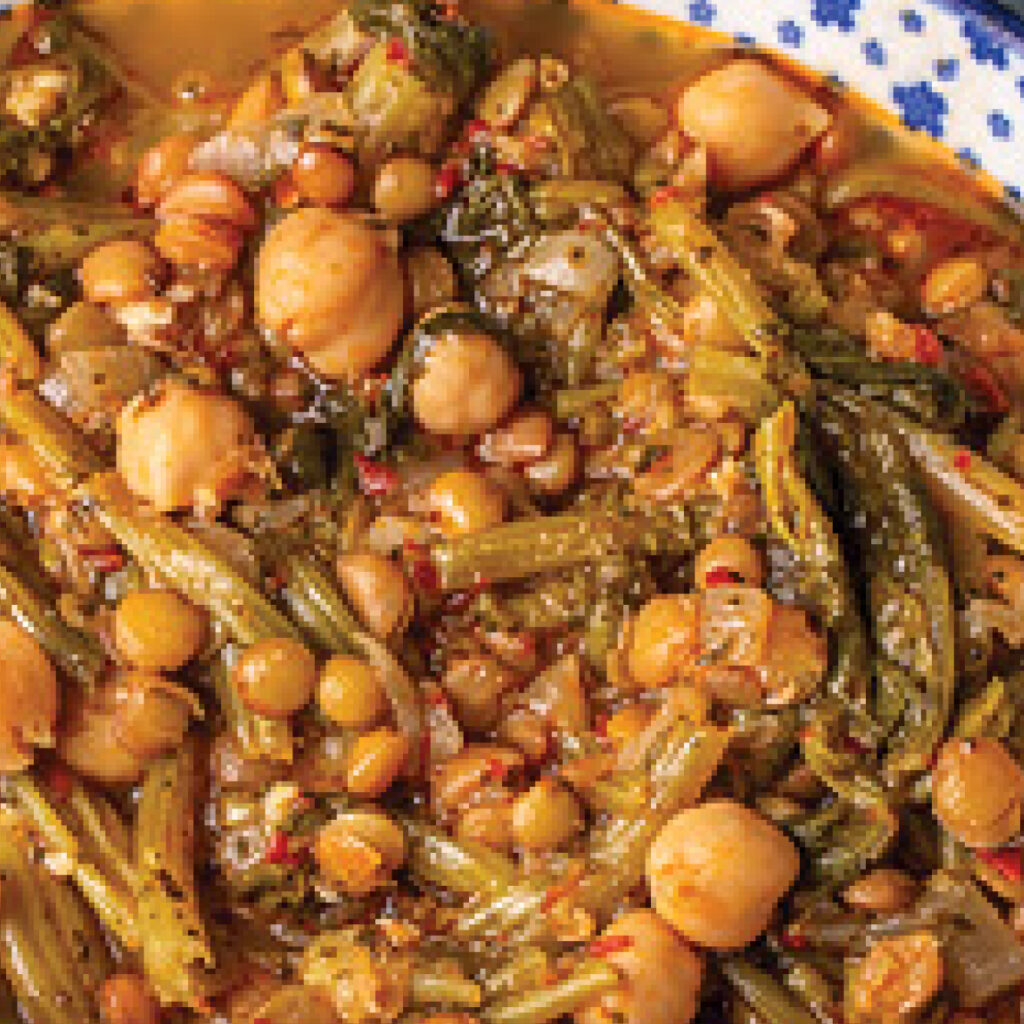
Malabar spinach is rich in vitamins A and C; fiber, iron, potassium, and calcium.
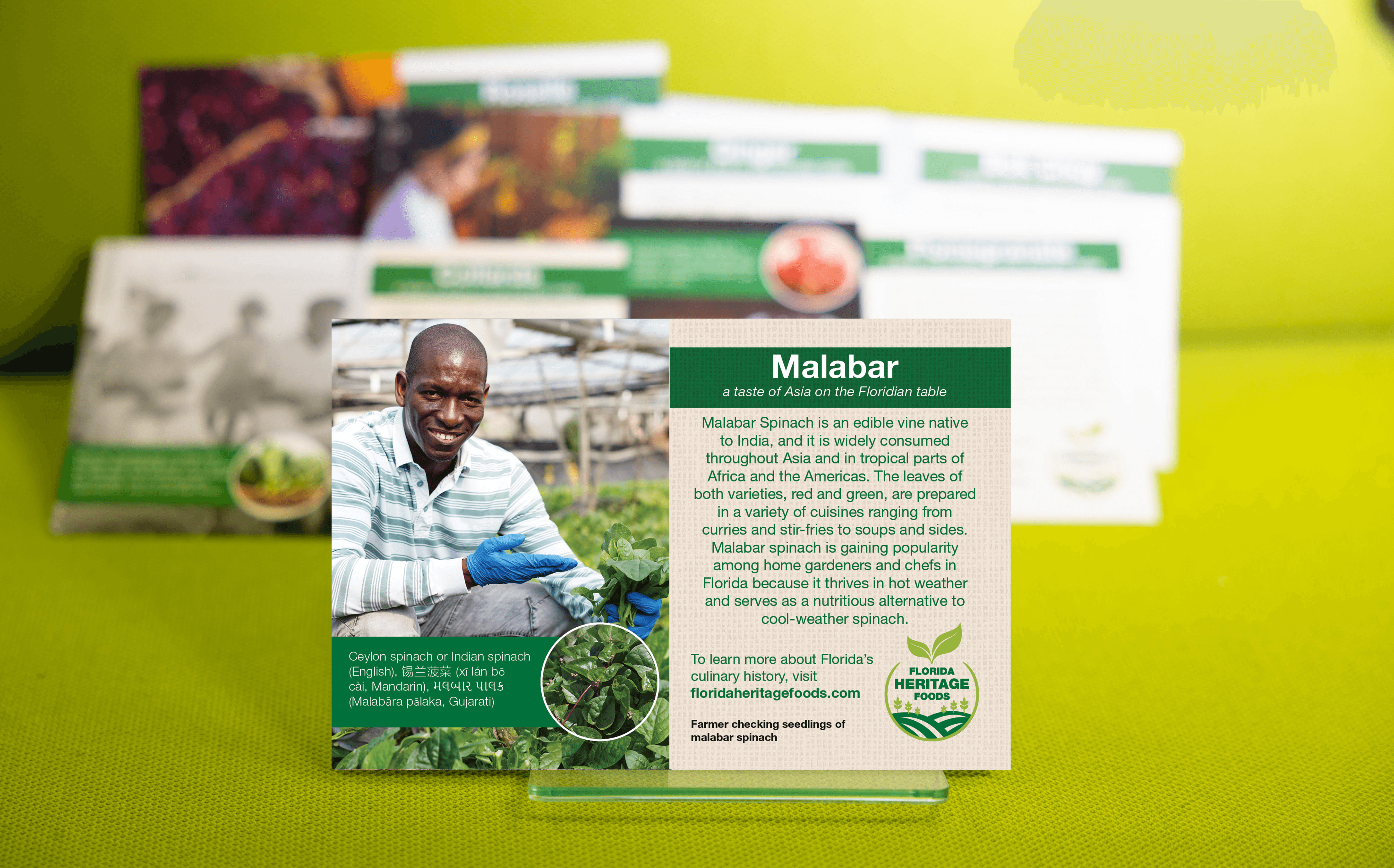
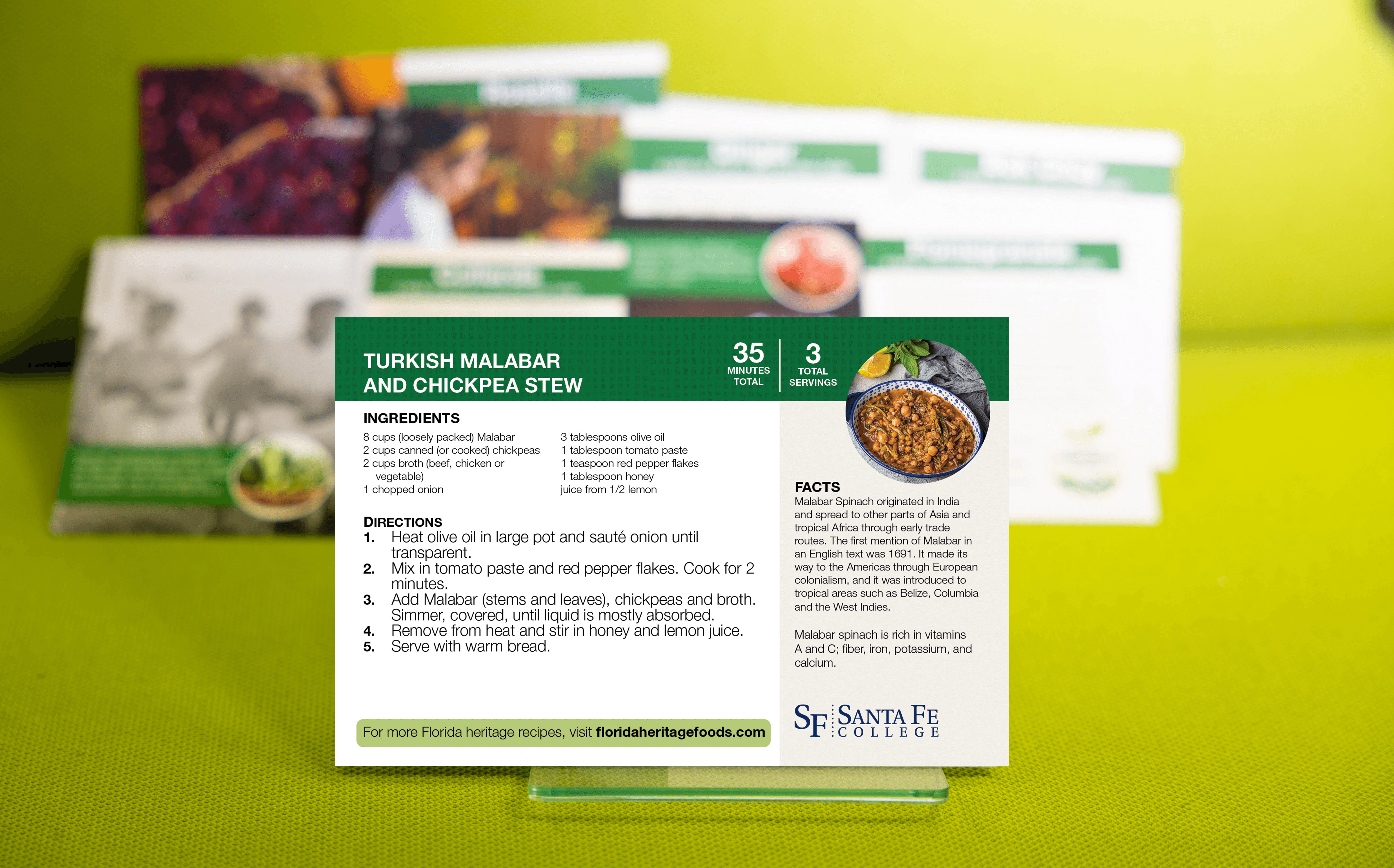
Plant Malabar Spinach by directly sowing seed or via transplants from March through June; harvest August through November. It is a climbing vine that needs support on a trellis or fence.
To plan a heritage garden, download the ‘Planning a Florida Heritage Garden (PDF).’

Santa Fe College Partnered with Multiple Organizations in a Collaborative Effort to Bring Awareness of the Heritage Plants In Florida.
BY CULTURAL HISTORY
BY GROWING SEASON
DROUGHT TOLERANT PLANTS
Commitment to Equal Access and Equal Opportunity
Santa Fe College is committed to an environment that embraces diversity, respects the rights of all individuals, is open and accessible, and is free of harassment and discrimination. For more information, visit sfcollege.edu/eaeo or contact equity.officer@sfcollege.edu.
SACSCOC Accreditation Statement
Santa Fe College is accredited by the Southern Association of Colleges and Schools Commission on Colleges (SACSCOC). For more information, visit sfcollege.edu/sacscoc.
